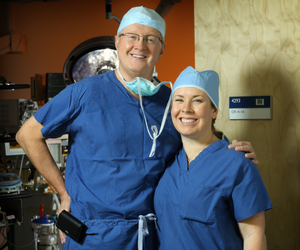What is Bladder Exstrophy?
Bladder exstrophy is a rare, complex congenital birth defect that involves abnormalites of multiple body systems and organs including the lower abdominal wall, bladder, pelvis, genitalia, rectum and anus. The condition is thought to occur due to abnormal development of the cloacal membrane during early fetal growth. This malformation results in protrusion of the bladder through the lower abdominal wall.
Incidence rates for bladder exstrophy have been reported to occur in approximately one of every 30,000 live births, with an estimated 2:1 male to female ratio. Current methods for gathering and reporting such figures vary however, so actual occurrence may differ from that previously reported.
Bladder exstrophy is a life altering condition requiring extensive surgical intervention, typically beginning shortly after birth when the child is just a few days old. Surgeries can be numerous over the course of a lifetime depending on severity, co-existing conditions and/or complications. Goals of surgical treatment include, but are not limited to: closure of the bladder and abdominal wall, realignment of the pelvis, preservation of kidney and sexual function, satisfactory appearance of external genitalia, and urinary continence. It is important to note that a successful initial closure combined with overall growth and ultimate size of the bladder are key factors in determing continence; therefore, proper care and treatment by a surgeon specializing in exstrophy cannot be emphasized enough.
In addition to the physical aspects of bladder exstrophy, there are social and emotional issues that may arise due to the intimate nature and complexity of the condition. Steps should be taken to account for these needs as well.
Continued research is critical for the advancement of care for this condition. Research initiatives focusing on cutting edge treatment options and identification of causative factors including genetic and environmental sources are key towards meeting this goal.






